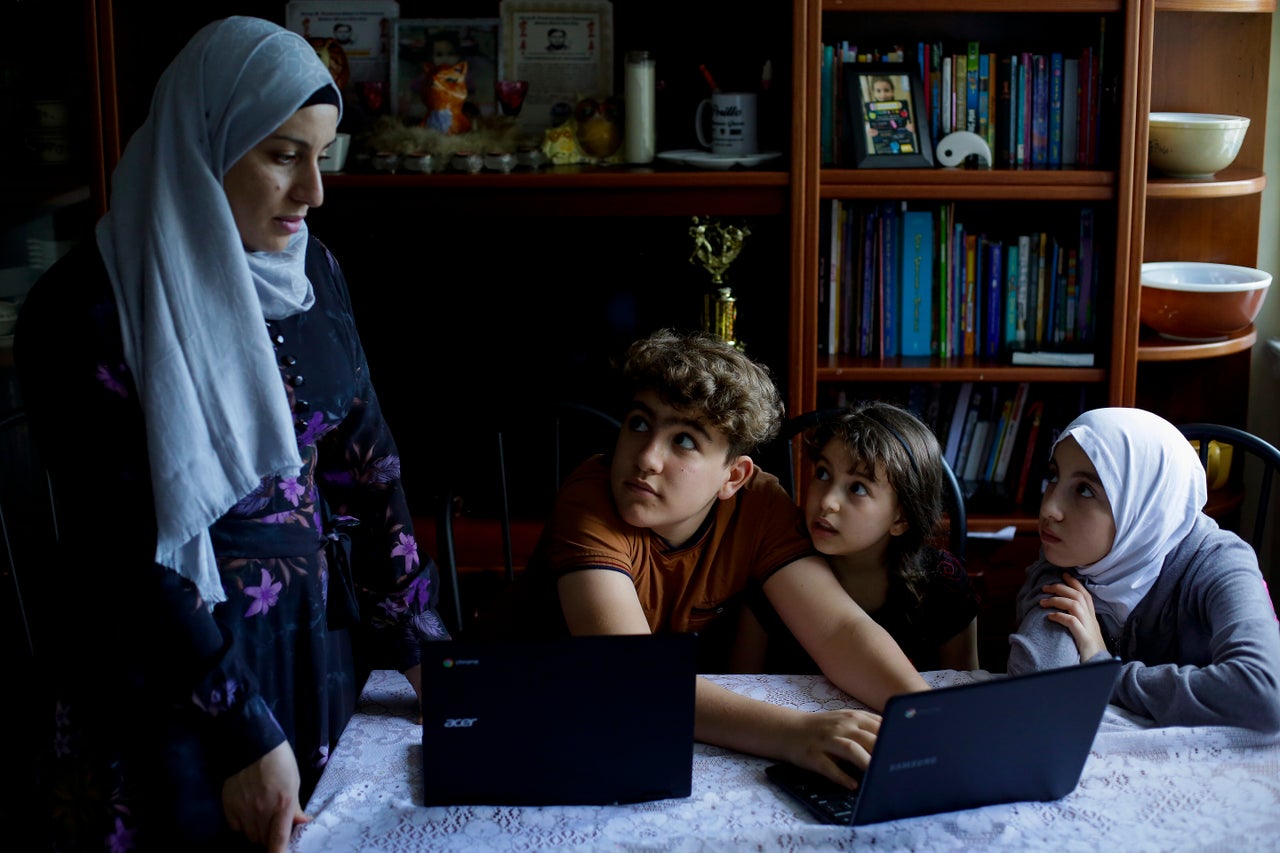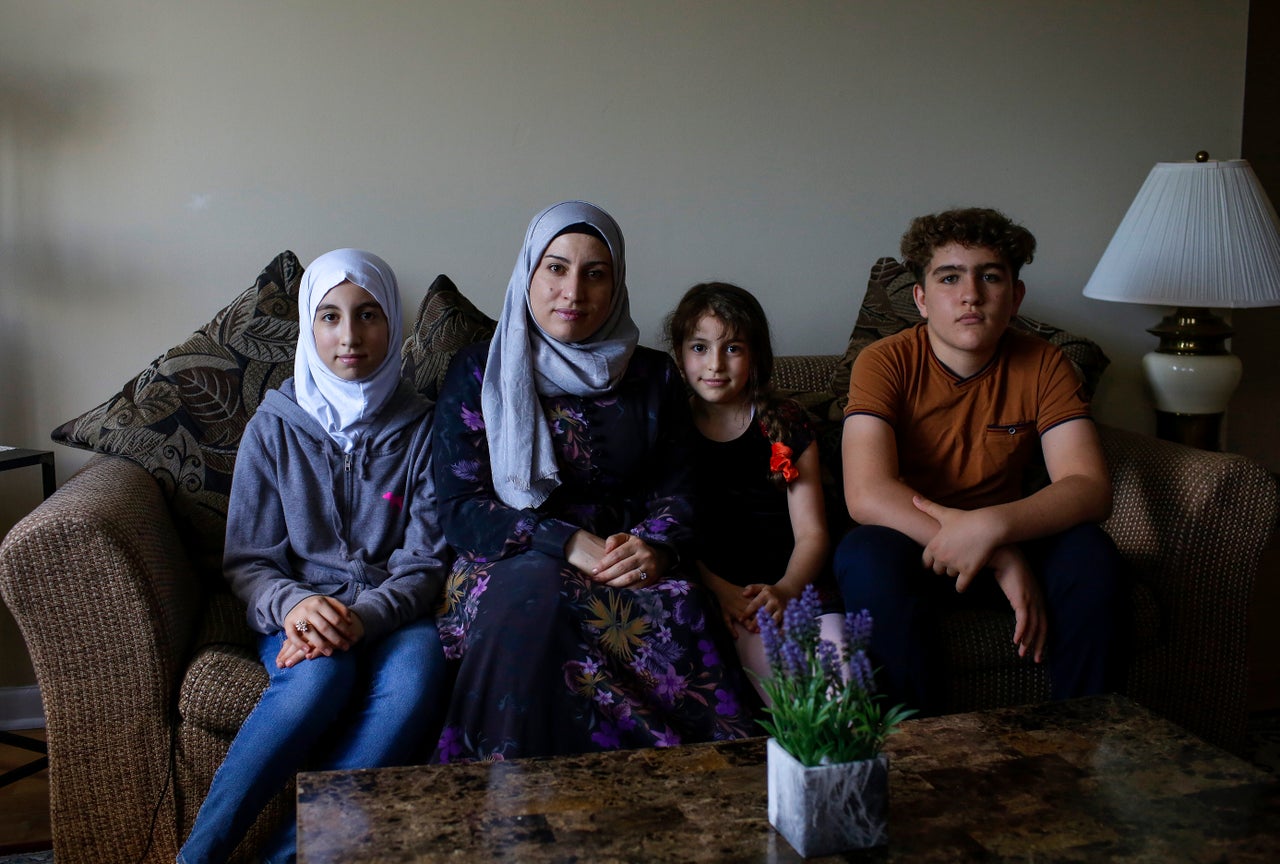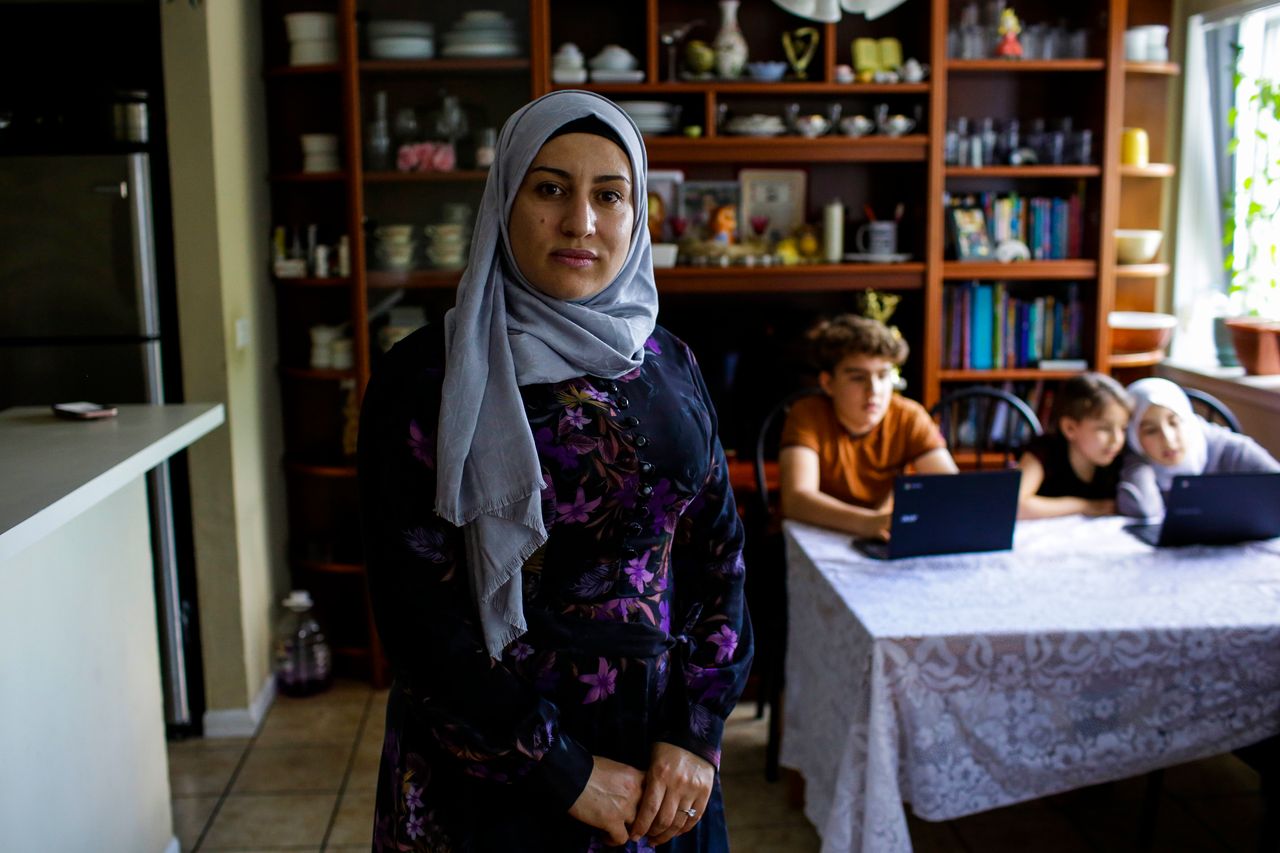This story about refugee families was produced as part of the series Critical Condition: The Students the Pandemic Hit Hardest, reported by HuffPost and The Hechinger Report, a nonprofit, independent news organization focused on inequality and innovation in education.
When the COVID-19 pandemic forced schools to pivot to remote learning, Nawar Almadani and her family weren’t sure what they’d do. Her three kids were enrolled in middle and elementary school; she was working toward her GED They didn’t own a laptop, and even when they got two from school ― one from the city for the kids, the other from Almadani’s program ― they had to share.
Beyond the struggles all families are facing with remote learning, the Almadani family is dealing with additional stress: They fled Syria as refugees, and moved to Chicago through RefugeeOne, a local resettlement agency, in 2016. They, like many refugee families in the U.S., face a litany of additional obstacles to remote learning, including language barriers and access to technology. And although many refugee families are doing their best, they risk falling behind without the special resources and support provided by schools.
According to the United Nations Refugee Agency, refugee children in primary education are lagging behind their peers globally. Refugee children frequently grapple with mental health issues and trauma due to displacement, war and conflict. For many of those refugees, a quality education often serves as the only source of stability in their lives and an eventual key to a successful future.
When COVID-19 halted traditional schooling, this source of stability for refugees was also upended. In the U.S., the lack of in-person schooling meant a lack of access to resources and human interaction needed to practice English. Schools also provide childcare, access to meals and nutrition, a source of support for vulnerable children, and a hub for socialization.
“When you switch to remote learning, very few school districts had any of those accommodations for people who might need particular support,” said Rebecca Winthrop, senior fellow and co-director of the Center for Universal Education at the Brookings Institution.
In a scramble to pivot to online learning, individualized education plans and English as second language programs get lost, she added. Winthrop worries that the current pandemic will only widen inequities within the educational system that will further disadvantage vulnerable populations like refugee children.
“Refugee families and children of non-native-English-speaking parents who might not speak English themselves, especially younger children, are completely marginalized and left behind,” Winthrop said.

Trying Not To Fall Behind
In March, Chicago Public School officials announced they would distribute 100,000 laptops to students who don’t have one as a part of the district’s remote learning program, which meant that Almadani’s children ― Mohamed, 13; Baian, 11; and Esraa, 9 ― received one, along with the laptop Almadani got from her GED program.
The two laptops are passed like a game of musical chairs so each family member can attend classes and complete assignments. But when classes overlap, Esraa often skips ― a bubbly child who can’t sit still, she doesn’t seem to mind.
Mohamed, currently in sixth grade, is struggling the most with remote learning. Three years ago, when he first arrived from Syria via Turkey, he didn’t speak any English. He has since learned at an impressive speed, thanks to resources at school. Prior to the pandemic, Mohamed often studied at the library and participated in after-school activities, including karate three times a week, where he conversed with his friends.
At home, he struggles to pay attention and can’t keep up with his teacher. There are 30 other students online, all speaking over one another, making it challenging for Mohamed. When he emailed the teacher for extra help, he rarely heard back.
Asked how he’s faring with remote learning, Mohamed frowned. “It’s horrible,” he said flatly.
Almadani is worried that Mohamed’s growth is being stunted and feels limited in her ability to help him. She said her English level is the same as her son’s. Together the pair try to decipher and finesse their way through self-education.
That sort of stress for non-Native English speaking parents is common, Winthrop said.
“We know from survey data the No. 1 concern for parents in the U.S. is learning loss for their kids. And it’s especially acute for kids who are from non-native from poor English speaking families or from poor and marginalized communities. It’s a source of real anxiety,” Winthrop said.
Mohamed, who is a faster reader, often reads aloud for his mother, who tries to understand through context clues and pointing out parallels in the Arabic language.
“We do benefit from one another,” said Almadani. “Our challenges are the same and so I learn, too.”

Fostering An Optimal Learning Environment With Minimal Resources
Baian, currently in the fourth grade, is better off than her brother. She was a toddler when she came to the U.S., allowing her to learn English and adapt to the American educational system easier. When her mom is busy with Mohamed, she’ll sneak off and watch makeup videos on YouTube.
She doesn’t mind remote learning, although she said she hates gym class on Zoom, especially when it involves doing jumping jacks in front of a computer.
Almadani is concerned about keeping her children academically engaged. She said at school, her children were challenged through activities and maps and audiovisuals, all resources she doesn’t have. At school, her children learn through a holistic and collaborative approach with their teachers and peers. But at home, all she can get done is ensuring the basics ― reading and writing English and solving math problems.
“It’s better than nothing at all,” she said.
For now, Almadani might have to scale back her GED studies until her children are back in school. She simply doesn’t have the hours during the day to study. It’s important for her to keep her children on track.
“While they were in school, I had time to study for about four hours a day. It was so much easier. But I don’t have any time or help now,” Almadani told HuffPost. “I have to supervise them, hour by hour, minute by minute.”
